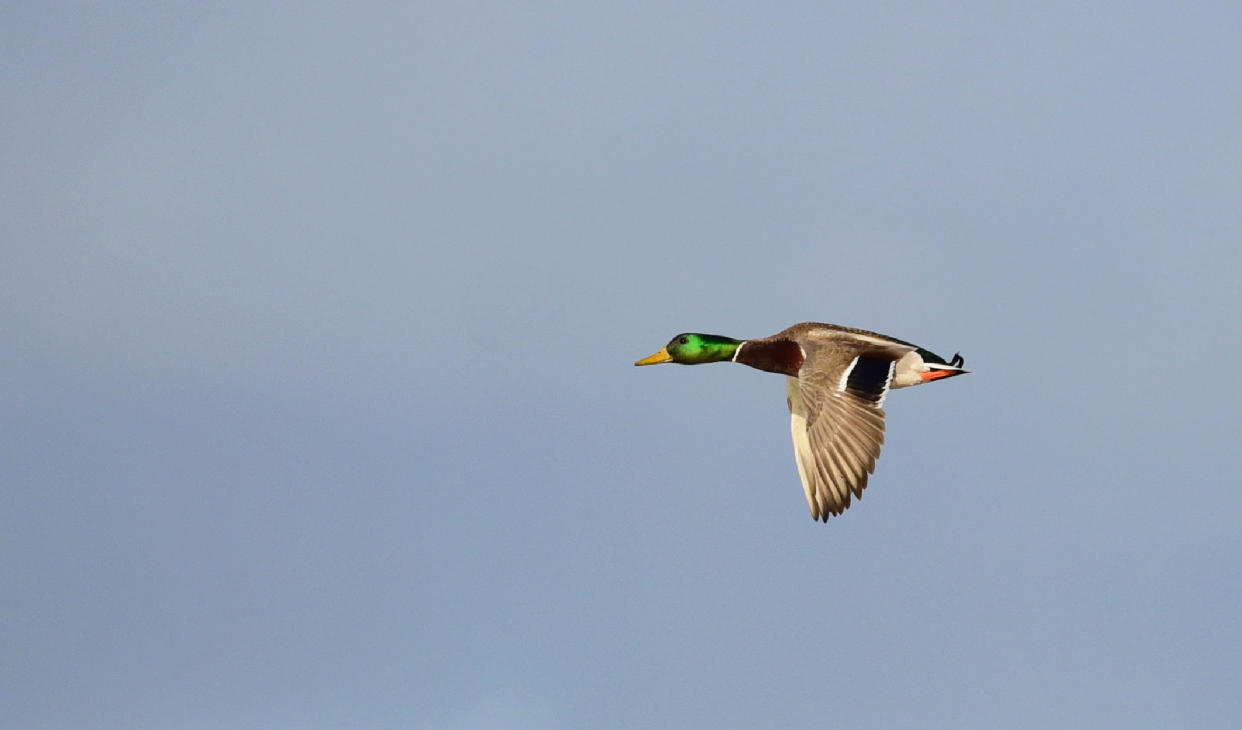Migrating Mallard Clocked at a Record Speed of Nearly 100 MPH

Spring waterfowl migrations are in full swing as millions of ducks, geese, and other species depart the southern U.S. and Central America and head toward Canada to live out the warm months. One drake mallard fitted with a GPS tracker from the Cohen Wildlife Ecology Lab at Tennessee Tech broke a lab record on April 6 by reaching a top speed of 99.3 miles per hour somewhere between southern Minnesota and the Canadian border. For context, that means the duck was flying as fast as famous pitcher Aroldis Chapman’s fastball and twice as fast as the world’s fastest land mammal, the cheetah, can run. The Cohen Wildlife Lab posted the feat to its various social media accounts Tuesday, along with a map of the greenhead’s northwesterly route. https://www.instagram.com/p/C5yUD5SuYgs Anyone familiar with the four main migratory flyways of North America will notice that the drake has also traveled from the eastern side of the Mississippi Flyway to the very western edge of the Central Flyway, and will likely end up somewhere in the Pacific Flyway before reaching its summering grounds. “Most of our birds have made it to the prairies, but this drake mallard is leading the pack,” a post on the lab’s Facebook page reads. “He started his spring migration on March 14 but took a three week break just outside of St. Louis while the weather warmed up. He took off again on April 6 and covered 1000 miles in 29 hours while also taking an 8-hour break in southern Minnesota. ESE winds gusting over 50 mph on the evening of April 6 pushed him 600 miles from southern Minnesota across the Canadian border in just 8 hours. With this crazy tailwind his top speed recorded on GPS was 99.3 mph!” A map of the migratory flyways of North America. Map by the North Dakota Game and Fish Department Covering 600 miles in 8 hours means the duck maintained an average speed of 75 mph during that time. The lab’s principal investigator and assistant professor of wildlife ecology and management Bradley Cohen pointed out in a reply to a commenter that mallards usually migrate at an altitude of 4,000 to 5,000 feet at night. “We’re studying the movements during the annual cycle of waterfowl, and trying to determine the importance of different habitat types for mallards,” Cohen tells Outdoor Life of his lab. “At the same time, we’re trying to understand how mallards balance hunting risk with getting into these really profitable, high-energy areas like flooded corn, and what the consequences of those decisions are.” While this particular drake broke the lab’s record, it’s not unheard of for ducks to travel at these breakneck speeds when they get good wind at their backs. One pintail hen flew from eastern Russia to California — some 2,000 miles — in 25 hours, maintaining an average speed of 80 mph as it traversed the width of the Bering Sea. The next day, it crossed three flyways and landed in Louisiana. Read Next: Hundreds of Mallards Swim Out of Flooded Timber, Swarming Hunters The lab’s posts elicited many comments of surprise and a handful of jokes from duck hunters. “I think this may be the same big Greenhead I missed at the end of the season,” one commenter writes. “Dude was moving!” A correction was issued on April 24, 2024: A previous version of this article misstated that Aroldis Chapman was in the Hall of Fame. This article has also been updated to include commentary from Bradley Cohen, leader of the Cohen Wildlife Ecology Lab.

